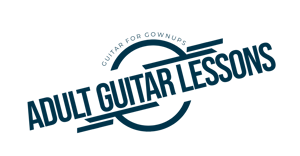In the beginning there were basic guitar cables. Nothing fancy, standard black jacket, ten or twenty feet long with straight chrome plugs with metal casings that unscrew so that you could access the wiring points and solder your own joints if something broke.
Nowadays we have choices. Yes, you can still get the basic black model with the ends that unscrew, but take one look in any music store or online catalog, and you are slammed with a barrage of guitar cable selections.
You can choose from rubber jacket, braided cloth jacket, brass ends, chrome plugs, 24 carat gold plugs, hot shrink connectors, anti-noise, anti-kink, anti-hiss, anti-cut out, straight cables, coil cables, stock cables, custom cables, economy models, boutique cables, and the list goes on, pretty dizzying for an old guitar player!
But there’s one choice that should be made before any of the above. Before you figure out what color braiding will go best with your sunburst Les Paul, or how many hundreds of feet of cable you will need to dazzle the chicks in the back row, before you call the custom shop to have them create your own “signature” model cable – you should decide, “what kind of ends (plugs) should I get, straight or angled?”
Recently, I was getting ready to head out to go play a gig. I grabbed my trusty PRS Triple Soap – my “don’t leave home without it” guitar, and started out the door.
Then the thought hit me that I hadn’t changed strings on the PRS in while. If I can get through 2 or 3 gigs on a set of strings, I’m doing good. I could think back to at least a couple of gigs on the current set.
So, as a precaution, I slid my “Jeff Beck” Strat into a gig bag to take along as a back up. This was formerly my “don’t leave home without it” guitar, until Paul Reed entered my life.
While on stage and getting tuned up before the gig, I got the PRS tweaked up and ready. Then when I pulled out the Strat and strapped it on. Suddenly I realized that the plug on my cable was a “right angle” plug, not overly conducive to the Strat input jack. I shoved it in the jack anyhow and proceeded to tune it. Then I thought I was going to have to grab the pliers to get it back out!
The first thing to determine when buying a guitar cable is which guitar you will be using it for. My PRS has an input jack on the side of the body, like a Les Paul.
In this case, a right angle plug is perfect. A straight plug on a side body input is an invitation for disaster. It’s just a matter of time before it gets knocked off, broken, or maims someone for life!
A right angle plug in this instance makes for a nice, smooth, connection that is almost flush with the guitar body.
On a Strat style guitar with the input jack mounted on the front of the guitar body, a straight plug is usually the best choice. It slides right into the jack with the least amount of strain on the connector.
Beyond the considerations for the “guitar end” of the cable, it’s also good to consider what you are plugging the other end of the cable into.
Are you running to an effects pedal, a pedal board, a rack mount unit, or straight into your amp?
When going from your guitar to an effects pedal with a side mount input, it might be reasonable to think a right angle plug will work best. But sometimes a straight plug will be an even better fit because it keeps the cable away from the pedal and reduces the tendency to get tangled up with it.
A pedal board with the input on the back might work best with a right angle plug. If you are plugging into a rack, it will largely depend on the rack placement, but quite often, a straight plug will work fine. The same can be said if plugging directly into the amp, but that can also depend on whether the input of the amp is on top, or in the front.
The main thing to determine is which style of plug will make for the smoothest connection with the least amount of strain on the cable ends. Always wanting to play it safe, I usually purchase cables with a right angle on one end, and a straight plug on the other.
In the whole scheme of life, deciding on the angle your guitar cable connectors doesn’t really rank up there with solving the world hunger crisis.
But with some cables costing upwards of $30 to $40 or more, serious thought should given on what type of connections are being made on both ends of the cable for greatest comfort and reduction of strain, if for no other reason than to maintain cable life for as long as possible.
You would think a 30 year stage veteran would have considered the cable connection before taking out the Strat, but sometimes even an old dog like me can’t see the “right angle”. (pun intended!)



